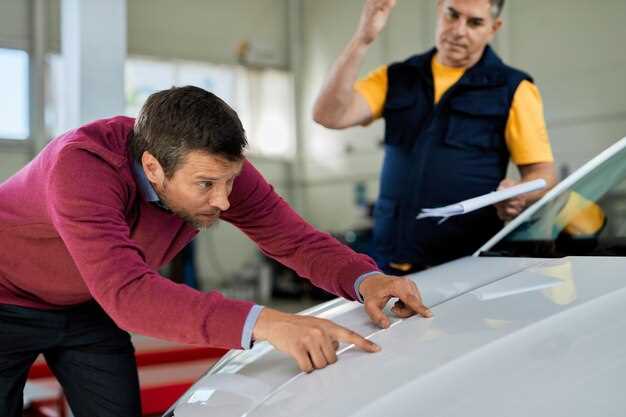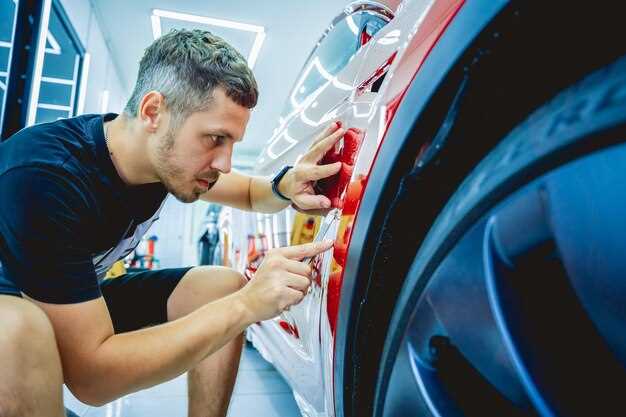
When it comes to vehicle customization and protection, the choice between a partial and a full car wrap can be a pivotal decision. Each option offers unique benefits that cater to different needs, budgets, and aesthetic preferences. Understanding these differences is essential for making an informed choice that aligns beautifully with your goals.
A partial wrap typically covers specific areas of the vehicle, providing the perfect balance between style and cost-effectiveness. This option is ideal for those looking to enhance key features of their car without committing to a complete makeover. With a partial wrap, you can highlight your brand logo or create eye-catching graphics while preserving the original color of your vehicle.
On the other hand, a full car wrap transforms your vehicle entirely, allowing for a complete rebranding or a dramatic aesthetic change. This option is perfect for businesses aiming to make a strong statement with mobile advertising or for individuals seeking to refresh their car’s appearance. However, it’s important to consider the increased investment that a full wrap entails compared to its partial counterpart.
Choosing between a partial and full wrap ultimately depends on your objectives, whether they involve branding, protection, or simply showcasing your personal style. In the following sections, we will delve deeper into the advantages and drawbacks of each option, helping you determine which wrap is the right fit for your needs.
Partial vs Full Car Wrap: Which Option is Right for You?

A car wrap is an excellent way to enhance your vehicle’s appearance and promote your brand. When choosing between a partial and a full car wrap, several factors come into play that can influence your decision.
A partial wrap covers specific areas of your vehicle, such as the hood, doors, or rear. This option is often more budget-friendly and can be ideal for businesses looking to showcase their logo or specific messaging without a complete overhaul. Partial wraps allow for versatility in design, letting you combine different colors and textures to draw attention to key areas. Additionally, they can be a quicker installation process, minimizing downtime for your vehicle.
In contrast, a full wrap transforms the entire vehicle with a uniform design, providing comprehensive coverage. This option is perfect for brands looking to make a bold statement and maximize visibility. Full wraps offer more space for creativity, allowing for intricate designs and artwork that can significantly enhance brand recognition. Moreover, they provide more extensive protection for the underlying paint, shielding it from UV rays and environmental elements.
When deciding between a partial or full wrap, consider factors such as your budget, the message you want to convey, and the desired impact on your audience. For those needing flexibility and a cost-effective solution, a partial wrap might be the better choice. However, if you aim for maximum exposure and a cohesive look, a full wrap may be worth the investment. Ultimately, the right option will align with your branding goals and budget constraints.
Understanding the Cost Differences Between Full and Partial Wraps
When considering vehicle wraps, understanding the cost implications of full and partial options is crucial for making an informed decision. Each type of wrap has its unique features and pricing that can affect your budget.
Full wraps cover the entire surface of the vehicle, typically leading to higher costs. The factors contributing to the price of a full wrap include:
- Material Quality: Higher-quality vinyl is often used for full wraps, which can withstand various weather conditions.
- Design Complexity: Full wraps require more extensive designs, which usually involve more hours of labor and design work.
- Installation Time: The installation process for a full wrap takes longer compared to a partial wrap, resulting in increased labor costs.
In contrast, partial wraps target specific areas of the vehicle, allowing for a more budget-friendly option. The cost factors for partial wraps include:
- Less Material Usage: Since only certain parts of the vehicle are covered, the amount of vinyl required is significantly reduced.
- Simplified Design: A partial wrap often entails simpler designs that can be executed more quickly.
- Faster Installation: The installation time is shorter, leading to lower labor costs.
Ultimately, the decision between full and partial wraps hinges on your artistic vision and budget constraints. Full wraps may be a more substantial investment for comprehensive branding, while partial wraps offer flexibility and affordability without sacrificing visibility.
Evaluating Aesthetic Impact: How Each Wrap Style Alters Vehicle Appearance

The choice between a full car wrap and a partial wrap greatly influences the overall look of your vehicle. Each option offers distinct aesthetic benefits that cater to different preferences and objectives.
A full wrap transforms the entire surface of the vehicle, allowing for bold colors, intricate designs, and unique patterns that can completely redefine its appearance. This comprehensive coverage ensures that the car stands out, making a striking impact and often serving as a mobile advertisement. With a full wrap, you can achieve a seamless look that enhances the vehicle’s contours and features, drawing attention from all angles.
In contrast, a partial wrap focuses on specific areas of the car, such as the hood, doors, or rear. This style can create an eye-catching yet subtle enhancement, allowing the original vehicle paint to show through. A partial wrap can be ideal for showcasing branding elements or graphics without overwhelming the vehicle’s design. This approach often maintains the vehicle’s inherent aesthetic while adding a personalized touch, making it elegant and refined.
When evaluating the aesthetic impact, consider how each style aligns with your vision. A full wrap offers a dramatic shift, perfect for those wanting a bold statement, whereas a partial wrap allows for creative expression while preserving the original automotive aesthetic. Ultimately, the right choice will depend on your goals, whether it’s to draw maximum attention or to enhance without overwhelming.
Determining Coverage Needs: When to Choose Partial Over Full Wraps
When deciding between partial and full car wraps, it’s essential to assess your specific coverage needs. A partial wrap typically covers only a section of the vehicle, which can be an ideal option for businesses that want to highlight key branding elements without spending on a full wrap.
Consider partial wraps if you want to maintain the vehicle’s original color while making a visual impact. This option is particularly effective for fleet vehicles where consistency across multiple cars is desired, yet a full wrap for each vehicle may not be feasible budget-wise.
If your goal is to save on costs, partial wraps offer a more economical solution while still promoting your brand effectively. They can be used for targeted advertising, ensuring key messages are visible without needing to cover every inch of the vehicle.
On the other hand, a full wrap transforms the entire appearance of the car, providing a uniform look that captures attention from all angles. Choose a full wrap when the objective is to create a bold statement, especially in competitive markets where high visibility is crucial.
Ultimately, the choice between partial and full wraps comes down to budget constraints, aesthetic goals, and the intended impact of your vehicle branding. Assessing these factors will help determine the most suitable option for your needs.



